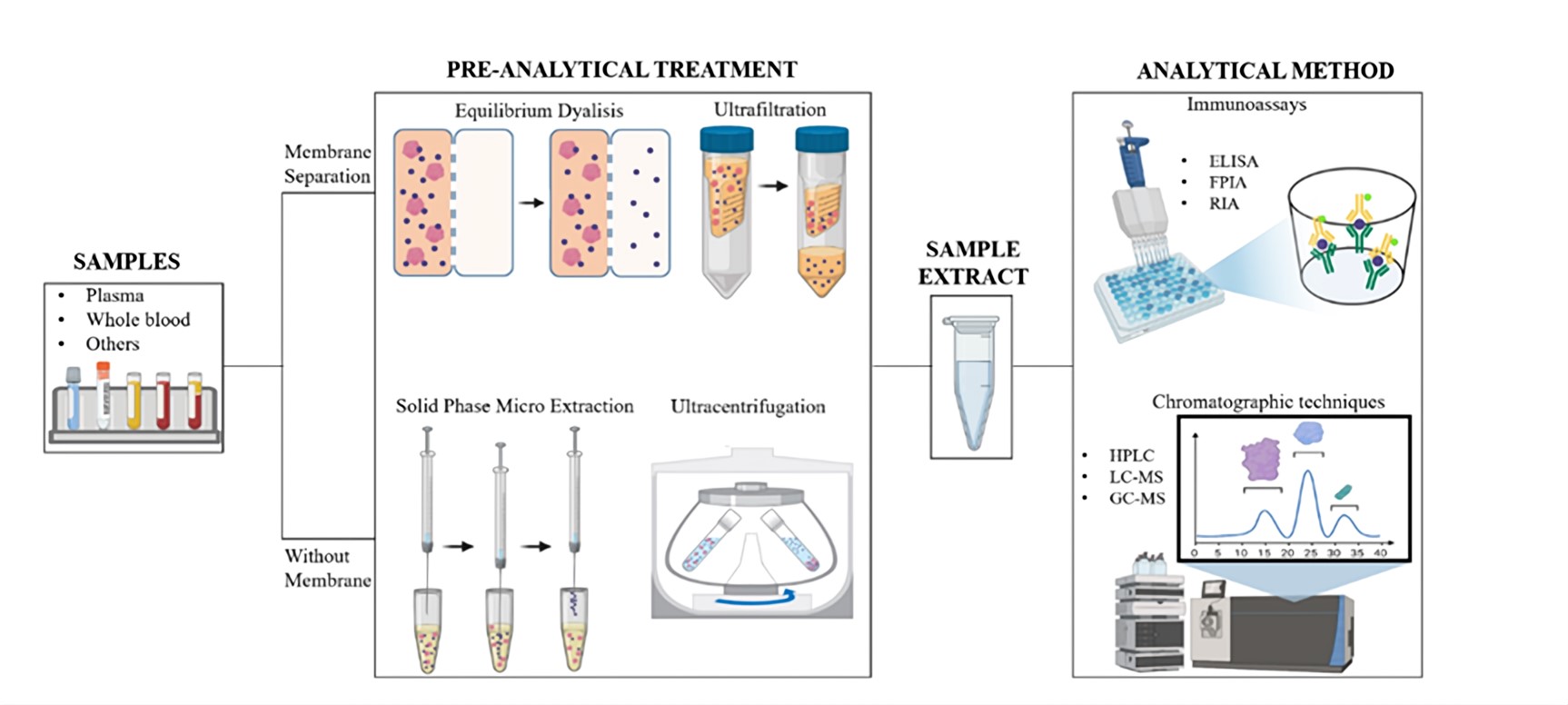Protein Binding Analysis Service
Protein Binding Analysis for Screening Drug Candidates
The in vitro protein binding assay is a key tool in the early stages of drug discovery and development to characterize the drug distribution. The results of the protein binding assay provide critical information about the drug's affinity for plasma, serum, whole blood, microsomes, and tissue homogenates. For example, a high affinity for plasma proteins indicates that a significant portion of the drug will be bound and, therefore, less available to exert its therapeutic effects; Conversely, a low affinity for plasma proteins suggests that a larger proportion of the drug will remain unbound, potentially leading to higher concentrations at the therapeutic site and more pronounced therapeutic effects. Therefore, understanding the extent of protein binding can provide valuable insights into a drug's pharmacokinetic profile.
Protein Binding Assays
During the protein binding assay, the drug is added to tissues such as human plasma, brain homogenate, etc., and the mixture is incubated under controlled conditions. The incubation period allows the drug to interact with the proteins present in the sample. Subsequently, the unbound drug is separated from the protein-bound drug using suitable techniques such as centrifugation or ultrafiltration. The concentration of the unbound drug is then determined using analytical methods such as HPLC or LC-MS.
 Fig.1 A workflow of protein binding assay.1
Fig.1 A workflow of protein binding assay.1
At Creative Biolabs, we have extensive experience in protein binding studies and can offer advice and support throughout the entire process, from sample preparation to data analysis and interpretation. We offer several protein binding assays. Our team of experts will carefully evaluate your specific needs to recommend the most suitable approach. Our protein binding assay services are designed to provide accurate and reproducible results, ensuring that our clients have the necessary data to make informed decisions about their drug candidates.
-
Plasma Protein Binding Assay
-
Whole Blood Binding Assay
-
Brain Tissue Binding Assay
-
Hepatocyte Binding Assay
-
Microsomal Binding Assay
Techniques
-
Equilibrium dialysis
-
Ultrafiltration
-
Ultracentrifugation
-
Flux dialysis
FAQ
-
What is the turnaround time for protein binding assays?
The turnaround time is typically several weeks depending on the complexity of the project and the specific assay method.
-
What is the most common assay for protein binding analysis?
Equilibrium dialysis is considered the gold standard for investigating protein binding over other methods such as filtration. Equilibrium dialysis is a relatively simple technique that can be performed with a wide range of samples, including plasma, serum, and other biological fluids It offers a high degree of precision and accuracy in determining the binding affinity of drugs or other ligands to plasma proteins. While other methods such as filtration may be less labor-intensive, they often lack the sensitivity and specificity required for accurate protein binding analysis.
Reference
-
Charlier, Bruno, et al. "The effect of plasma protein binding on the therapeutic monitoring of antiseizure medications." Pharmaceutics 13.8 (2021): 1208.
For Research Use Only | Not For Clinical Use


 Fig.1 A workflow of protein binding assay.1
Fig.1 A workflow of protein binding assay.1
 Download our brochure
Download our brochure